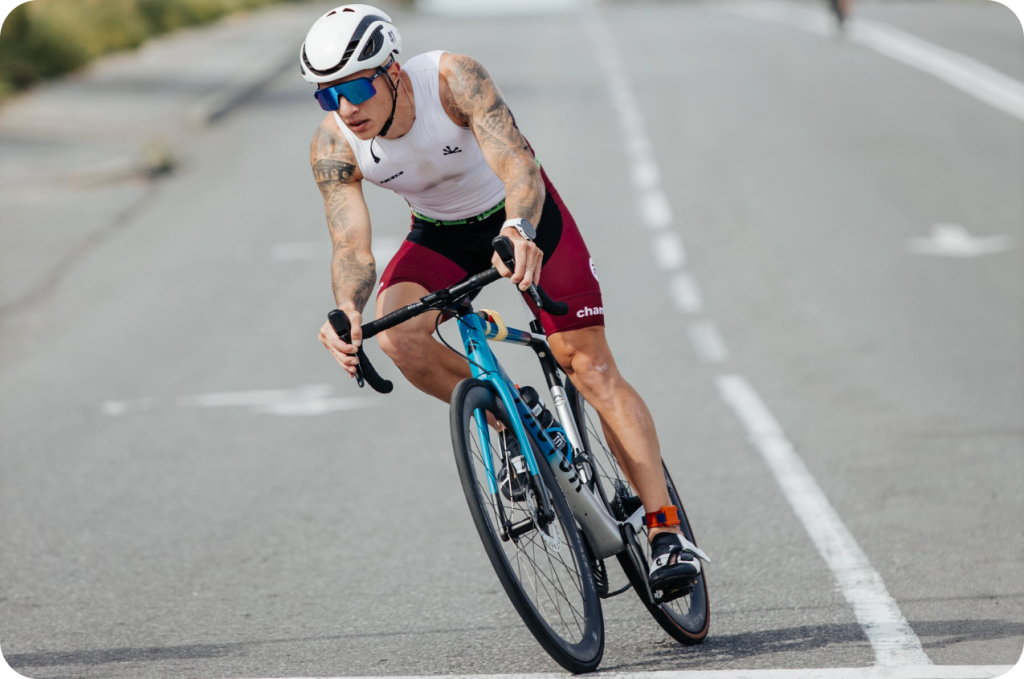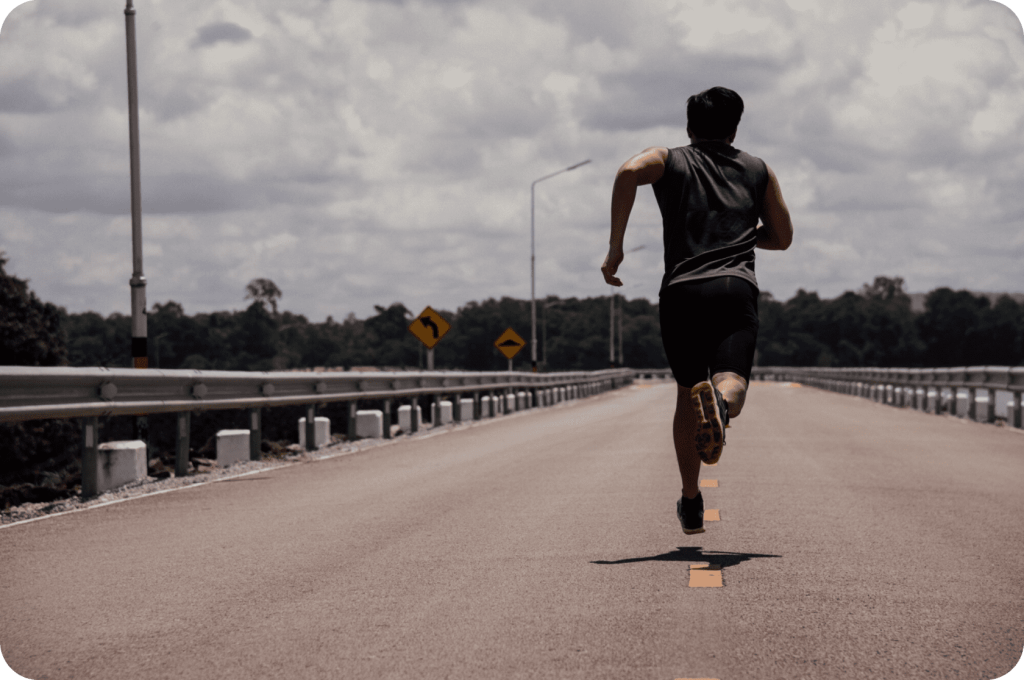Tracking your workouts is a game-changer.
When it comes to reaching your fitness goals, understanding how many calories you burn is a key part of your progress.
Whether you’re in the middle of a weight loss process, want to build muscle, or improve endurance, knowing how many calories you burn can help you stay on track and adjust your routine for the best results.
This is when this handy calories burned calculator comes into play.
With this tool, it is much easier to calculate calories burned when running, cycling, and swimming.
Here, we explain how the calories are burned, how to use our calculator, and how specific exercises affect the calorie burn.
Calories are a measure of energy, and understanding how they work is crucial for effective workout tracking.
Your body is always burning calories, even when you’re not doing anything.
It uses the energy from food to keep things running — like breathing, digesting, and even thinking.
Even when you’re just sitting or sleeping, your body is still working, burning calories to keep everything functioning.
The more you move, the more calories you’ll burn throughout the day.
How many calories you burn during exercise depends on a few things, like your weight, how long you’re working out, and how intense the activity is.
You can use a calorie calculator to get a rough idea of how many calories you’re burning with different exercises.
But the whole “calories in vs. calories out” idea isn’t the complete story.
Your hormones have a big influence on how your body reacts to food and how it burns energy.
So, it’s not just about how much you eat and move — it’s also about how your body processes everything.
Using a calorie calculator is pretty simple.
First, you’ll need to input some basic details like your age, weight, height, gender, and activity level.
These factors help the calculator estimate how many calories you burn during different activities.
For example, if you’re running, the calories burned calculator will consider the intensity and duration of your run to give an estimate of calories burned.
Some calculators also ask about your goals, like weight loss or muscle gain, to provide tailored recommendations.
Just remember, it’s an estimate, so it’s helpful to track your progress over time and adjust as needed.
When it comes to burning calories, the type of activity you do plays a huge role in how many calories you burn.
Intensity and duration are the key factors here — how hard you work and how long you keep moving directly impact the number of calories burned.
Activities that get your heart rate up and keep you moving for an extended period, like running, swimming, and cycling, burn a lot of calories.
Running, for example, is a great calorie-burning exercise because it engages multiple muscle groups and requires constant energy output.
A moderate 30-minute base running training can burn about 300 calories for someone weighing around 155 pounds.
Swimming is another excellent option because it works your whole body and can burn anywhere from 200-400 calories in 30 minutes, depending on the stroke and intensity.
Cycling, especially at higher intensities (see cycling interval training) or on hilly terrain, can also burn up to 300 calories in 30 minutes.

Activities like brisk walking, hiking, and dancing offer a middle ground.
These are great for people who may not be ready for high-intensity workouts but still want to burn a decent number of calories.
For instance, a 30-minute brisk walk can burn around 100-150 calories, depending on the pace and the person’s weight.
Hiking on uneven terrain can increase that number significantly as it requires more energy to climb hills and navigate rough paths.
Yoga and stretching exercises generally burn fewer calories, but they still have their place in a fitness routine.
These exercises focus more on flexibility, balance, and strength rather than calorie burn. A 30-minute yoga session can burn around 100 calories for an average person who weighs around 155 pounds.
It’s worth noting that more dynamic forms of yoga, like power yoga or vinyasa, can increase calorie burn because they incorporate more movement and faster-paced sequences.
A key point is that the longer and harder you work, the more calories you burn.
For example, a 30-minute high-intensity interval training (HIIT) session can burn between 300-400 calories, but the intensity is much higher than a moderate run or walk.
On the other hand, a 60-minute brisk walk might burn around 200 calories, which is still effective for those who enjoy lower-impact activities.
The number of calories burned also depends on individual factors like your weight, metabolism, body fat, and fitness level.
Heavier individuals tend to burn more calories during the same activity compared to lighter individuals because their body requires more energy to perform the same movement.
Your body also burns more calories as it becomes more conditioned, so the more you exercise regularly, the more efficient your body gets at burning calories — especially in high-intensity workouts.
Ultimately, the key is to choose activities that you enjoy and can stick with while also considering your fitness goals.
If you’re aiming for weight loss, incorporating higher-calorie-burning exercises like running or swimming can help speed up the process.
But don’t underestimate the benefits of moderate or lower-calorie activities, as they can be just as effective when done consistently.
To track your workouts effectively, you need to calculate calories burned and monitor your progress over time.
One of the easiest ways to do this is by using this calorie burn calculator, which can give you a rough idea of how many calories you’re burning during different activities.
This helps you see how much energy you’re using, whether you’re running, cycling, or swimming.
Another helpful tool is a fitness tracker or app, which can give you real-time updates on things like heart rate, steps, and calories burned.
These trackers make it easy to log your workouts so you can look back and see how you’ve improved over time.
The real value of tracking comes when you start making adjustments.
For example, if you’re trying to lose weight, knowing how many calories you burn during your workouts helps you balance your diet and exercise routine to create a healthy calorie deficit.
On the other hand, if you’re aiming to gain weight muscle or put on muscle, you’ll know when to increase calorie intake to fuel your body properly.
Keeping track also keeps you motivated.
When you can see your progress, it encourages you to stick with your routine and push yourself further.
Over time, these small adjustments based on your data will help you reach your goals more effectively.
A calorie calculator is a handy tool that can help you track your workouts and get a better idea of how many calories you’re burning during different activities.
Whether your goal is to lose weight, build muscle, or just stay fit, knowing how many calories you’re burning makes it easier to make smart choices about your diet and exercise plan.
The key is to understand how calories actually work and use a calculator to track your burn.
This will help you tailor your efforts to hit your fitness goals more effectively.
Adding a mix of high-intensity exercises, strength training, andwell-balanced nutrition into your routine will help you burn more calories and see better results.
Stay consistent, keep track of your progress, and make adjustments along the way to keep moving toward your goals!
Understanding how calories work and how to use a calorie calculator can help you achieve your weight loss or weight gain goals.

The number of calories you burn each day depends on a few things, like your basal metabolic rate (BMR), body weight, and how active you are.
Your BMR is the number of calories your body needs to keep basic functions going, like breathing and digesting food, even when you’re just resting. On top of that, the more active you are — whether through exercise or just daily movement — the more calories you burn.
If you weigh more, you’re likely burning more calories, because your body needs more energy to keep things moving.
To get a better idea of how many calories you’re burning each day, a calorie burn calculator can be really helpful, as it factors in your activity level and BMR.
Losing weight is all about creating a calorie deficit, meaning your body burns more calories than you eat.
This doesn’t mean you have to drastically cut back on food, though — it’s about finding the right balance.
A calorie calculator can help you figure out how many calories you’re burning through exercise so you can adjust your calorie consumption to make sure you’re burning more than you’re consuming.
It’s also important to focus on eating nutritious foods that will give you energy rather than just cutting calories.
Small, sustainable changes — like swapping processed snacks for fruits or veggies — can make a big difference over time without feeling like you’re starving yourself.
The best way to calculate calories burned is to use a calorie burn calculator that takes into account your body weight, exercise duration, and METs.